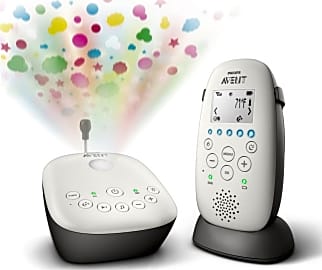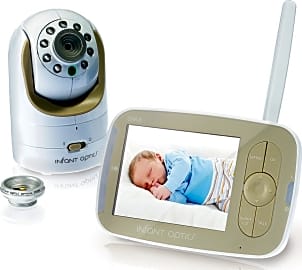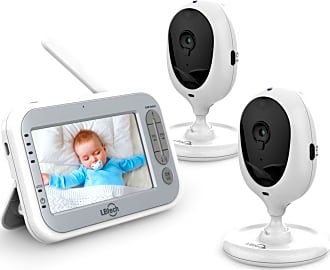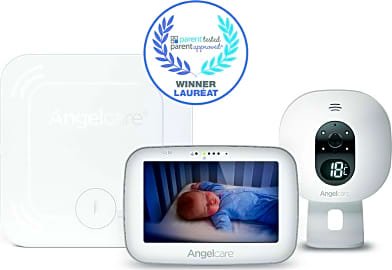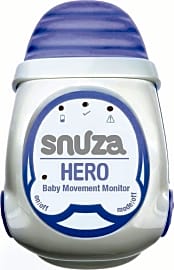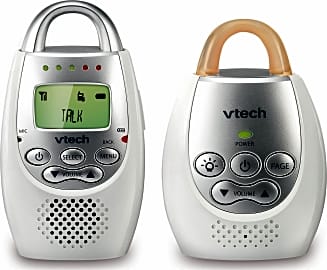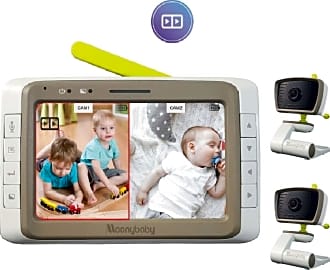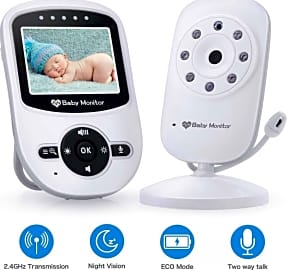The 10 Best Baby Monitors

This wiki has been updated 39 times since it was first published in March of 2015. With today's wireless transmission technology it's easier than ever to keep an eye (and ear) on your little one, thanks to these advanced baby monitors. They come in models that transmit sound and/or video, and some even keep tabs on your child's movements and the ambient temperature in the nursery to give you the peace of mind that comes with knowing that your infant is both safe and comfortable. When users buy our independently chosen editorial selections, we may earn commissions to help fund the Wiki.
Editor's Notes
January 28, 2020:
There are a lot of similarities between this list and our list of video baby monitors, mainly because most parents today are going to want cutting edge technology in their hands to keep tabs on their newborns. That said, there are some models on this list that are audio-only, like the capable VTech Safe & Sound, as well as models designed exclusively or in part to monitor your baby's motion or breathing. The Snuza Hero is one such motion detector, and this is the kind of technology that can make a big difference if you've had monitors in the past and found yourself tuning out the sounds of your child on the other side.
The Angelcare 3-in-1 AC527 is an attempt to marry the two technologies, with a very good motion sensor and a decent camera. If the image quality on its display were better, it might have climbed a lot higher on our list, especially with the temperature readout on its camera. Beyond those considerations, things like transmission range and security were paramount, as was the ability to expand a given system to accept feeds from multiple cameras.
Baby Monitors Give Peace Of Mind
They can get things done, know their child is safe, and maintain their sanity all at the same time.
While many researchers may say that a baby monitor doesn't add a measurable practical advantage, new parents know that it helps them feel more secure about their baby's safety and well-being. And let's be honest, it allows you to knock out a few chores while maintaining a close-enough watch on your little one.
Modern baby monitors come with so many features to choose from, they can leave a new parent's head spinning. But once the right one is chosen, the advantage is undeniable.
We're living in a world where we have to keep track of our kids 24/7. If a new piece of technology is going to allow us to do just that, why not take advantage of it? Gone are the days where parents lay their baby down in his crib and wait until he cries. Now, they can listen to him babble as he learns to talk, watch him learn to roll over and sit up, and know exactly when he learns to climb out. It's a great way to not miss out on those important milestones.
And once the baby is no longer confined to a crib, parents can watch their toddler roam about the room and play. They can get things done, know their child is safe, and maintain their sanity all at the same time.
While some of the "experts" might insist that baby monitors are unnecessary, new parents know that they can provide invaluable to peace of mind.
What Are Baby Monitors Capable Of Doing?
To qualify as a baby monitor, a device has to have two components: a parent unit and a microphone with or without a camera.
Many parents are still opting for the audio-only monitors, so they can hear when their baby wakes up. This is a great option for infants, and some models even come with a two-way talk feature that allows parents to soothe the baby without being in the room. This feature is also perfect for older kids to talk back and use like a walkie talkie.
Many parents are still opting for the audio-only monitors, so they can hear when their baby wakes up.
Video monitors come with even more features to choose from, including pan-tilt-zoom cameras, night vision, and WiFi connection for remote access.
Some companies offer movement monitors that detect movement and breathing and sound an alarm if the baby is too still or stops breathing. These are known to be finicky, however, as they can easily detach and trigger false alarms.
You can choose between analog and digital monitors depending on your specific needs. Analog monitors are generally more affordable and operate over radio waves. They are prone to interference and sometimes pick up signals from other monitors or even private or police scanners. Digital monitors operate on a scrambled frequency, like cell phones. These are much less prone to interference and more difficult to hack.
Advancing technology has even made it possible to download apps that can turn any smartphone or tablet into a baby monitor.
The Baby Monitor Isn't A New Thing
The first baby monitor was developed and marketed by the Zenith company in 1937. It was called "Radio Nurse" and was an audio-only monitor intended to allow parents to hear inside their babies' rooms. Zenith President, Eugene F. McDonald Jr. was saddened by the kidnapping of the Lindbergh baby in 1932 and worked to develop a system to keep babies safe.
It was sometimes possible to hear a neighbor's entire phone conversation over the baby monitor.
While the idea was sound, the technology was primitive and came with complications. They often picked up local radio broadcasts, making it difficult to hear inside the baby's room. It was these complications that prevented baby monitors from gaining popularity with the public. Along with that, they were prohibitively expensive. In today's money, one of these would set you back at least $300.
It was another fifty years, in the 1980s, before baby monitors became popular. Even these monitors were still analog, audio-only monitors and often picked up interference from the newly popular cordless phones. It was sometimes possible to hear a neighbor's entire phone conversation over the baby monitor.
While they soared in popularity, many people avoided buying them because they valued their privacy (and didn't want to know what their neighbor's were saying about them).
Digital technology has now made it possible to use a baby monitor without picking up radio broadcasts or a random neighbor's conversation. Even analog monitors are on a scrambled frequency that allows for increased privacy.


